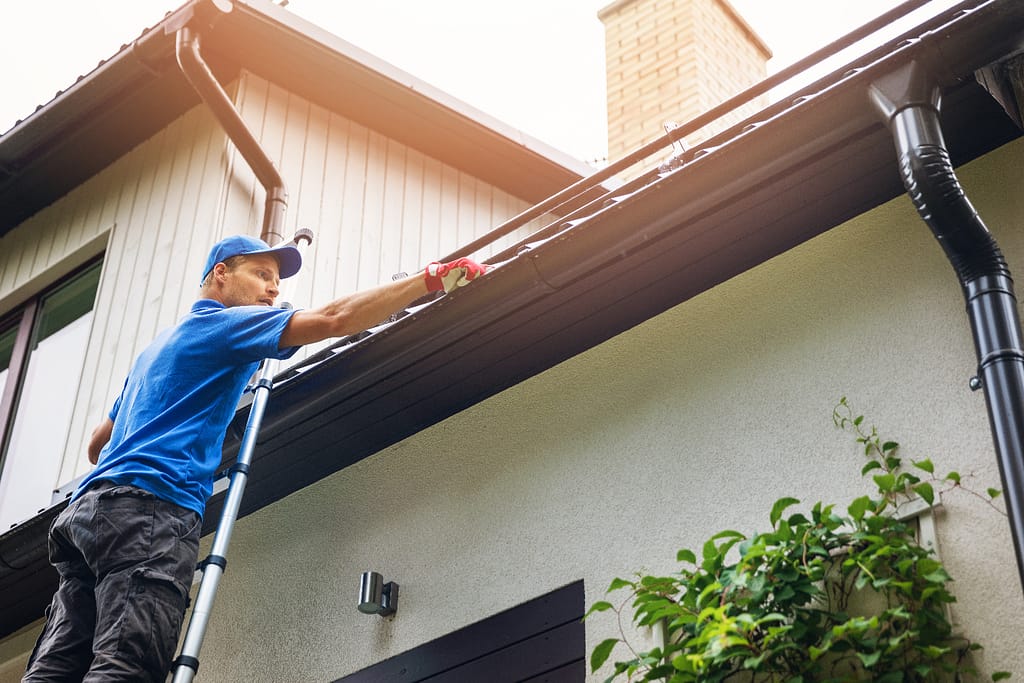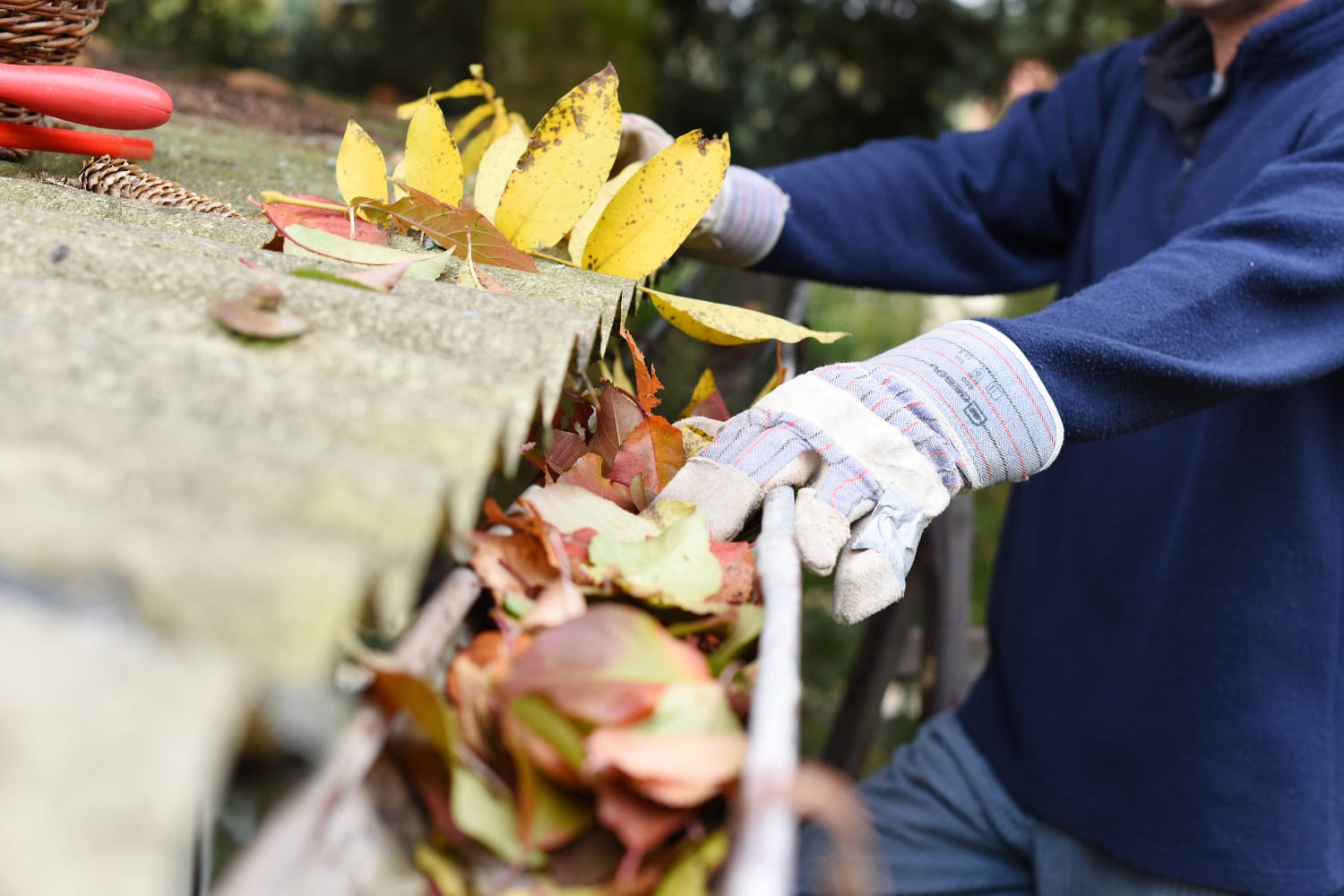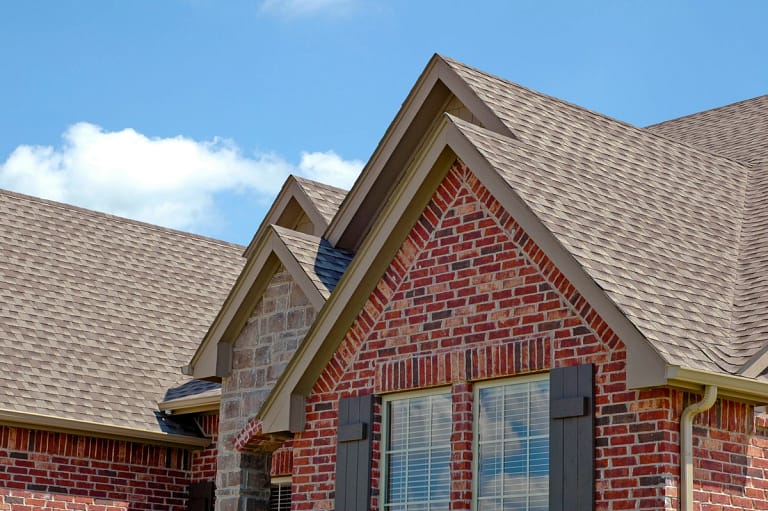When it comes to protecting your home from water damage, the choice of gutter materials is crucial. Homeowners often wonder which materials offer the best balance between cost, durability, and maintenance. Whether you’re considering aluminum, vinyl, steel, copper, or stainless steel, each option comes with its own set of advantages and challenges. Below, we’ll dissect these options to help you determine which gutter material aligns with your home’s needs without adding fluff.
Inside this blog:
- Understanding Gutter Materials
- Clear Gutters: A Step-by-Step Guide
- Gutter Maintenance and Repair Tips
Understanding Gutter Materials
Rain gutters might seem like simple channels, but there’s a lot more to them than meets the eye. The material of your gutter system plays a vital role in its performance and longevity. Climate is a key determining factor. For instance, while vinyl gutters might be an economical choice, they are less suited for cold climates due to the risk of cracking. Likewise, aluminum, though resistant to rust, can suffer damage in severe weather.
Cost-effectiveness is another factor to consider. Materials like copper and stainless steel may have a higher initial cost but can be more economical in the long run due to their durability and lesser maintenance needs. On the other hand, materials like aluminum and vinyl are cost-effective upfront but might require more frequent maintenance. The bottom line? It’s about finding the right balance between upfront cost, maintenance, and lifespan.
Aluminum Gutters
One of the most commonly used materials, aluminum gutters, are popular for their:
- Lightweight
- Affordability
- Resistance to rust
- Longevity
However, despite their many advantages, homeowners should be aware that aluminum gutters can suffer damage in severe weather.
Vinyl Gutters
If you’re looking for a budget-friendly option, vinyl gutters might just be the right fit. They are known for their low cost and are one of the easiest types of gutters to install, which could potentially reduce labor costs and complexity. However, their major drawback lies in their susceptibility to extreme temperatures.
Vinyl gutters can crack in severe weather conditions, making them a less suitable option in colder climates.
Galvanized Steel Gutters
When it comes to strength and durability, galvanized steel gutters top the list. Thanks to the process of galvanization, which involves immersing steel gutters in molten zinc, they are protected from rust. However, to ensure their longevity, regular maintenance is necessary to prevent rust from setting in over time. If you’re looking for an alternative, consider zinc gutters for their natural resistance to corrosion.
They might require more effort in terms of upkeep, but their strength makes them a worthy contender.
Copper Gutters
For homeowners seeking a distinguished appearance along with superior longevity, copper gutters are an excellent choice. They are naturally resistant to rust and corrosion, ensuring their durability. Over time, they develop a patina, adding to the aesthetic value of your home’s exterior.
However, their higher material and installation costs make them a pricier option compared to other materials. But their long lifespan and eye-catching appearance might make the investment worth it.
Stainless Steel Gutters
If you’re seeking a blend of aesthetics and durability, stainless steel gutters could be your answer. Known for their:
- Rust-free properties
- High sheen
- Premium look to your home’s exterior
- High durability
- Ability to withstand harsh weather conditions
Stainless steel gutters are a great choice for your home, but if you prefer a more traditional look, wood gutters can also be an option.
However, their higher cost compared to other materials may be a deterrent for some homeowners. But for those willing to invest, they offer long-lasting performance and an appealing exterior.
Clear Out Gutters: A Step-by-Step Guide
Follow these steps to clear your gutters of debris:
- Safety First: Place your ladder on stable ground and wear your gloves and safety goggles to begin the cleaning process.
- Remove Large Debris: Use your trowel or gutter scoop to remove large debris, placing it in your bucket or bag as you go. Start at the downspout and work your way along the gutter.
- Flush the Gutters: Once the larger debris is removed, use your hose to flush out the gutters. This will help remove any remaining small debris and check that water flows freely through the downspouts. If water backs up, you may have a clog in the downspout.
- Clear Downspouts: If your downspout is clogged, try using the hose to flush it out from the top. For tougher clogs, you may need to use a plumber’s snake to clear the path.

Gutter Maintenance and Repair Tips
Regular gutter maintenance is essential for optimal gutter function and longevity. Routine tasks such as cleaning out debris and checking for leaks or cracks can significantly extend the life of your gutters. Moreover, ensuring that downspouts correctly direct water away from your building structure can prevent potential water damage.
Regular Cleaning
Regular cleaning is crucial to prevent clogs and potential water damage. You should aim to clean and inspect your gutters at least twice a year, particularly in the fall and spring when debris accumulation is most likely. The cleaning process involves removing debris by hand or with a plastic scoop and using a garden hose to rinse away the residual dirt.
During cleaning, it’s important to inspect for any structural damage, ensure there is no standing water, and check that water flows properly without any leaks.
Inspecting for Damage
Regular inspection of your gutters for damage is a vital part of maintenance. This includes:
- Examining the hangers or spikes for security
- Checking the seams and end caps for leakage due to worn away sealant
- Keeping an eye out for signs of water damage around the gutters, which may indicate overflowing and failing gutters.
Also, look for signs of rust, leaks, or holes, which can affect the performance of your gutter system.
Repairing vs. Replacing
When your gutters show signs of damage, it’s time to decide whether to repair or replace them. This decision should be based on the extent and type of damage. Minor issues such as small rust spots or minor cracks in seals can often be fixed, deferring the need for gutter replacement.
However, when gutters show signs of severe rust, cracks, or pulling away from the home, it may be time to consider replacing them instead of just repairing them.
Leave Your Gutters in Our Hands
Choosing the right gutter for your home involves careful consideration. And don’t forget, a well-maintained gutter system is an investment that safeguards your home from potential water damage.
If your gutters require attention, trust Best Exteriors for assistance. Feel free to get in touch for a complimentary consultation. We’re eager to connect with you!




